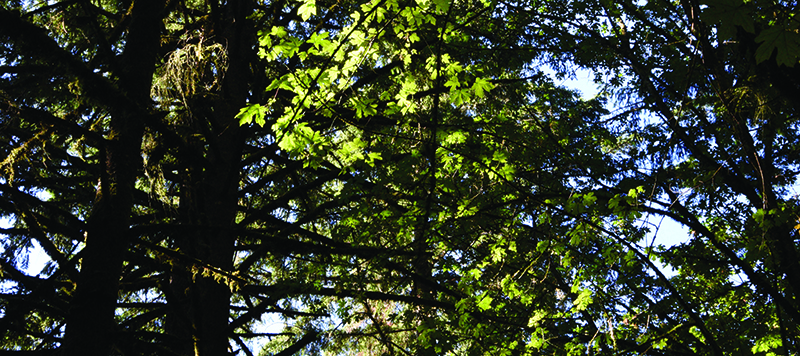Nearly a century of data provides knowledge for the future.

Since 1926, Oregon State University has conducted hundreds of studies across the College of Forestry’s 15,000 acres of research forests. These studies have contributed impactful solutions to the everyday and real-world challenges of sustainably managing forests for many uses.
Cat Carlisle who is pursuing a graduate degree in the Forest Engineering and Resource Management department, is adding her own study to the mix, examining the potential for Oregon’s forests to contribute to carbon storage and sequestration. Carlisle is analyzing the inventory of carbon stock in the McDonald and Dunn Forests — and projecting how different forest management strategies might shift carbon levels in the forests over the next 150 years.
“The hope is to find ways to use forest management to take carbon dioxide out of the atmosphere and sequester it in biomass, to contribute to climate change mitigation. I hope this project sheds light on how to manage a sustainable working forest in a way that considers ecological factors like carbon stock, especially as the climate changes,” Carlisle explained.
Because Carlisle is conducting this work in the research forests, she was able to immediately jump in and access a wealth of existing data.
Edmund Hayes Professor in Silviculture Alternatives, Klaus Puettmann, manages a long-term research study in the McDonald-Dunn and facilitates opportunities for students to learn in the forests. His study investigates alternatives to clearcutting and examines whether features of mature and old-growth Douglas-fir forests could be retained through a variety of types of timber harvests. He is a staunch advocate for the research forests and their value as a long-term resource.
“The research forests offer examples of a wide range of forest conditions and hold great value for researchers and teachers who want to consider a multitude of forestry approaches,” Puettmann says, “We don’t have many examples of different silviculture treatments that are this close to campus
and accessible to students.”
Puettman says one of the greatest benefits of performing his research project on the McDonald and Dunn research forests is the wealth of long-term data available. “Researchers and educators investigating various studies can potentially launch their project with the help of decades of data,” he said.
Learn more about past and present research in Oregon State University Research and Demonstration Forests.
A version of this story appeared in the 2021-2022 College of Forestry Biennial Report.

